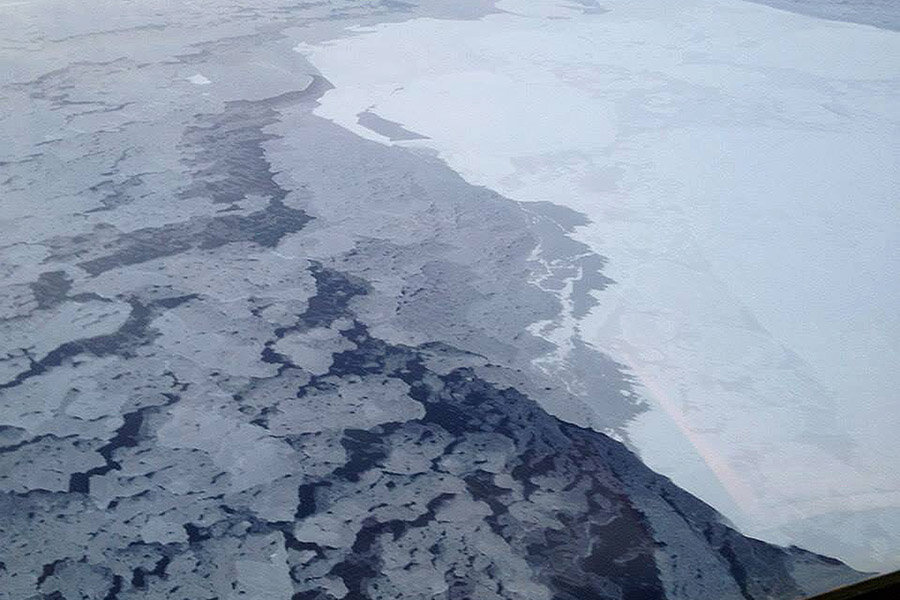Arctic ice is melting. Rainy days ahead?
Loading...
When Arctic ice melts, it doesn't go quietly.
Scientists struggling to predict the effects of climate change have suspected that melting sea ice, a problem in its own right, has the additional effect of increasing precipitation. But a wetter world doesn't necessarily mean a better one, and researchers' efforts to more precisely track changes at the top of the world have been stymied by its extreme temperatures and winds.
In a paper published Monday by the National Academy of Sciences, researchers from Dartmouth College and Carleton College became the first team to observationally confirm the relationship between melting seas and higher precipitation in the Arctic, pointing to climate feedback loops that could potentially impact temperatures as much as doubling atmospheric carbon dioxide would. It's a factor that, until now, could not accurately be worked into climate change models.
And while the most dramatic changes are local, what happens in the Arctic doesn't stay there.
"A lot of these large changes are maximized in the Arctic," lead author Ben Kopec says. But they "extend into lower latitudes," helping to account for climate changes from Boston to Europe — perhaps even the recent string of frigid winters in the American Northeast, an oddity in a warming world.
The faster ice melts, the faster evaporation accelerates, which drives precipitation. Given the scale of Arctic ice sheets, figuring out how much is disappearing and to what degree precipitation is increasing is crucial to predicting the effects of global climate change and determining what to do about it.
The team tracked moisture changes at six Arctic sites, comparing the hydrogen- and oxygen-isotope makeup of precipitation samples over a 22-year period to establish the isotopes' sensitivity to ice melt. Those isotopes also reveal the source of the precipitation in the first place, either local or subtropical evaporation regions.
In the Canadian Arctic, about every 39 thousand square miles of ice lost to melt increases the percentage of Arctic-sourced moisture by 18.2 percent, or 10.8 percent in the Greenland Sea: that's 10.9 percent and 2.7 percent for each Celsius degree increase, indications of how the planet is adapting to creeping temperatures.
Data "across all six sites show this beautiful relationship between the sea ice and the moisture sources," says Mr. Kopec, a doctoral candidate in Dartmouth's Department of Earth Sciences.
That's enough to help model how much precipitation to expect in the future, but a critical question remains: will it be rain or snow?
Precipitation changes create feedback loops, either reinforcing or resisting the overall trend of upward temperatures. Arctic regions should hope for snow, which is more reflective than water and can help reflect the sun's energy back into space, cooling down the local climate. Rain, on the other hand, just keeps driving the hotter, wetter trend, disrupting the Earth's energy equilibrium.
Either way, it's a significant impact: possibly as big as doubling the atmosphere's carbon dioxide. And while snow alone can't undo the global trend, it could counteract local impacts and "slow things down," Kopec says.
Researchers haven't yet determined which kind of precipitation is dominating the trend, but that's next on Kopec's to-do list; he plans to take a closer look at seasonal trends to determine which feedback loops are gaining ground. And then there's the challenge of figuring out what Arctic trends mean for those of us below the Arctic Circle.
"Sea ice is declining at an alarming rate, so it is important to understand the consequences of the climate feedbacks caused by these changes," he says. Feedback loops' impact could be felt "across the entire globe, not just localized impacts in the Arctic system.”








